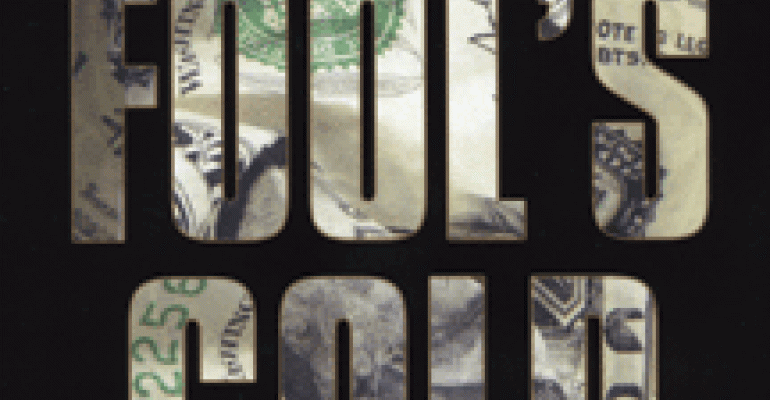
The tone of Gillian Tett's book, Fool's Gold, is refreshing. Populist politics (on top of the naturally occurring outrage that tends to accompany self-inflicted financial crises) have pumped a lot of invective into the debate about how the crisis happened. But Tett, a highly regarded journalist at the Financial Times, plays fair. She states, “The story of the great credit boom and bust is not a saga that can be neatly blamed on a few greedy or evil individuals. It is a story of how an entire financial system went wrong as a result of flawed incentives within banks and investment funds, as well as the ratings agencies; warped regulatory structures; and a lack of oversight. It is a tale best understood through the observation of human foibles, as much through economic or financial analysis. And though plenty of greedy bankers — and perhaps a few mad, or evil, ones, too — play crucial parts in the drama, the tragedy of this story is that so many of those swept up in the lunacy were not acting out of deliberately bad motives.”
Tett's story begins in 1994, and focuses on the work of a group of bold, young bankers at J.P. Morgan who took “swaps” and helped turn them into the exotic credit derivatives that would later bring down the world's financial system. It's a “bitter irony,” Tett says, that the J.P Morgan derivative team thought derivatives would be good for the financial system; she quotes a member of that team as saying, “People are sitting around now and saying innovation is bad, that derivatives are this terrible thing, that credit derivatives should be banned. But really this crisis is not to do [sic] with derivatives. It is about bad mortgage lending, bad risk management practices, how the innovation was used.”
In essence, financiers borrowed the concept of the futures contracts (used since antiquity) that let farmers trade away the risk of loss on their crops. Why not use derivatives to trade the risk linked to corporate bonds and loans — to allow lenders to dampen default risk by trading it away? “If you could really insure banks and other lenders against default risk, that might well unleash a great wave of capital into the economy,” Tett writes.
But, alas, these credit derivatives (the CDOs, credit default swaps and the like) could also be used to amplify risk. And that's just what happened: “It would be the second feature that would come to dominate the business a decade later, eventually leading to a worldwide financial catastrophe.” Speculation drove the growth in credit derivatives. In other words, Tett says, by the late 1990s, bankers (especially senior executives who didn't understand them) discovered how profitable CDOs and other asset-backed securities could be, and they rushed headlong into them. The securities allowed them to make more money, run around regulators and reduce capital ratios (to make more money). Many bankers began to regard them as nearly riskless.
Not every banker punted away his risk measures. Indeed, many of the J.P. Morgan bankers who helped popularize credit derivatives grew skeptical and worried that financial institutions were going too far with the creation of CDO of ABS (CDOs built out of asset-backed securities, usually mortgaged-backed bonds). One of the J.P. Morgan executives says he could never “work out” the risk/reward trade off that some banks were making in the early 2000s; another went on to launch a hedge fund in 2005 in an effort to exploit price “distortions” in the credit markets and placed “hefty bets on a downturn of the CDO market,” Tett writes. Jamie Dimon at J.P. Morgan Chase was also a notable skeptic.
But even as many began to worry that the credit boom was far too stretched and that the housing market was an outright bubble, many banks pressed on. By mid-2005, CDS (credit default swaps) contracts were worth about $12 trillion — or about the size of the entire U.S. economy. Stan O'Neal, late to the game, made sure Merrill topped the underwriting league table, selling $52 billion in CDOs in 2006. Retail investors, government bodies, pension funds, even charities got into the action, Tett says, chasing the returns the derivatives offered. Indexes (the ABX, CDX, LCDX and others) popped up as a way to track credit default swaps and mortgage-backed securities. Even when in 2006 house prices stalled in some high-profile markets, banks continued to “roll the dice” on the mortgage boom.
So, if you are keeping score, there is plenty of blame to go around. From idealist bankers who failed to see how these credit derivatives might be abused by other, greedier bankers; to regulators who failed to understand the inherent risks; to mortgage originators who kept cranking out loans, even relaxing standards and offering sexy mortgages; to, well, the greedy home buyer/flipper who got in over his head — everybody helped fuel the great credit crisis.






